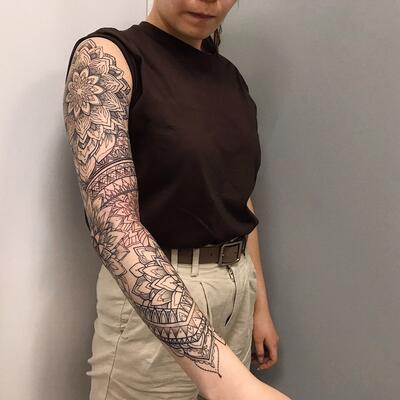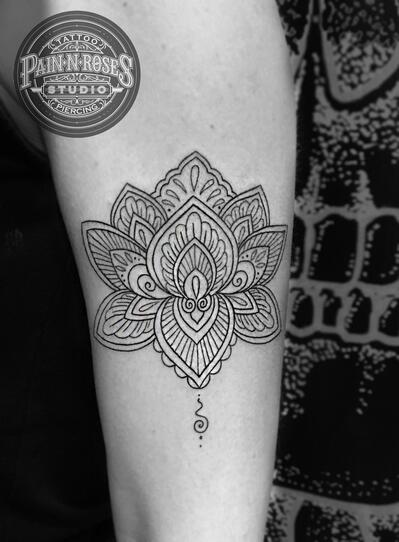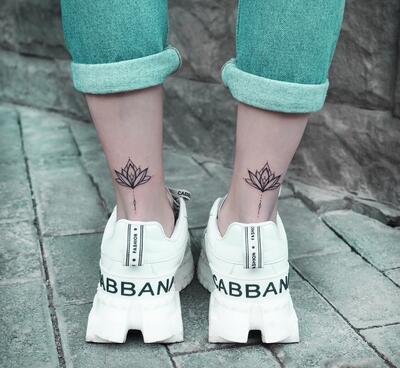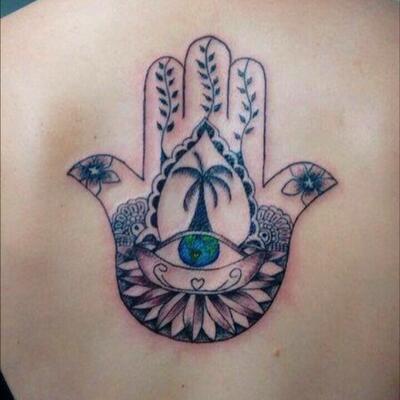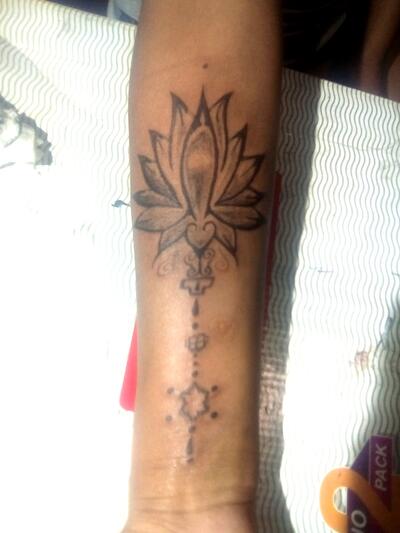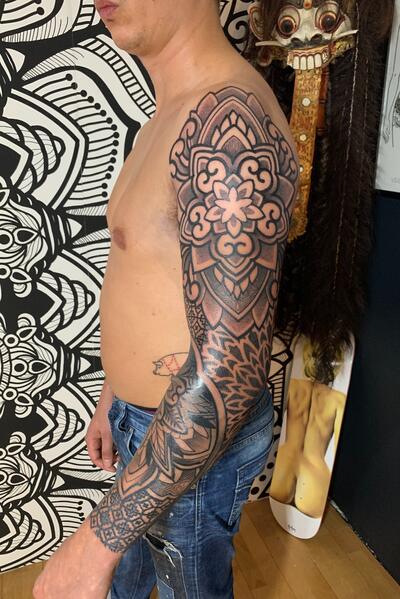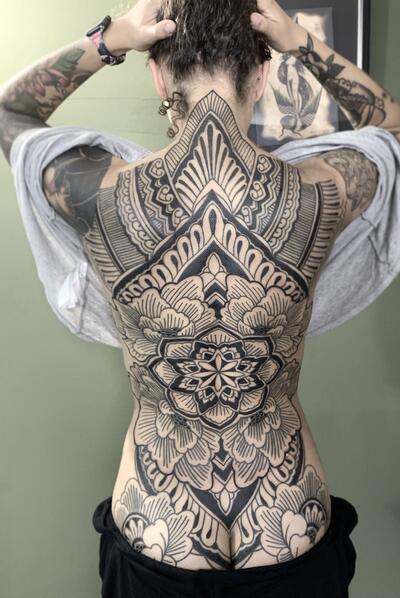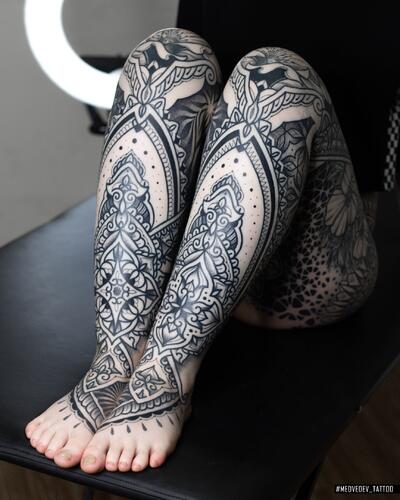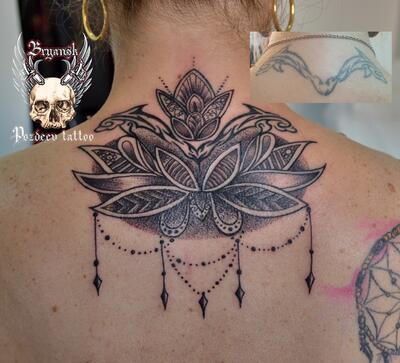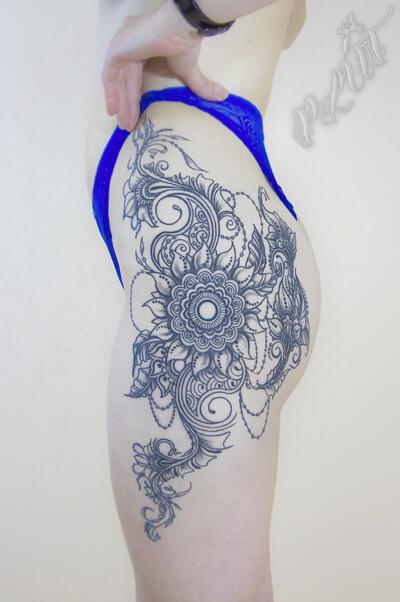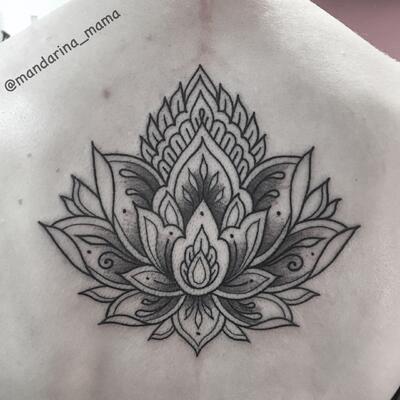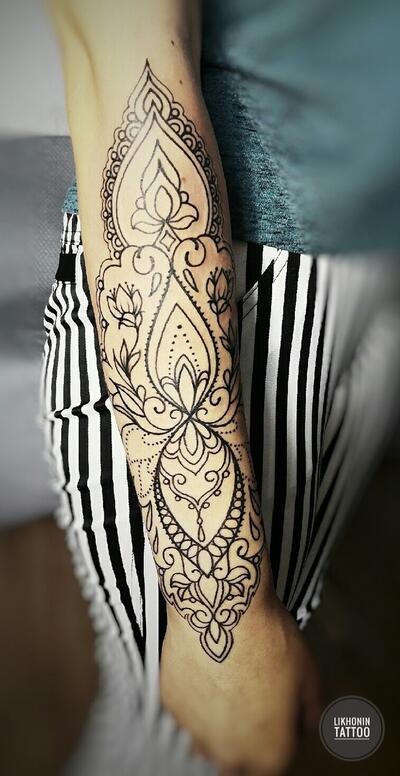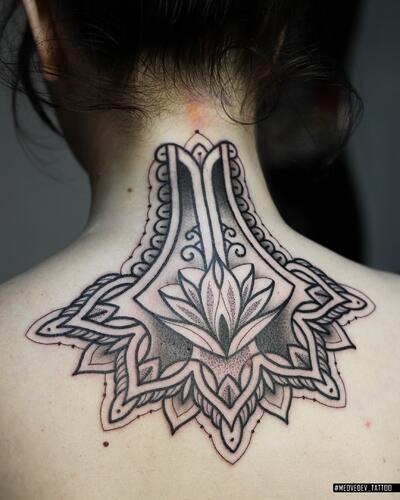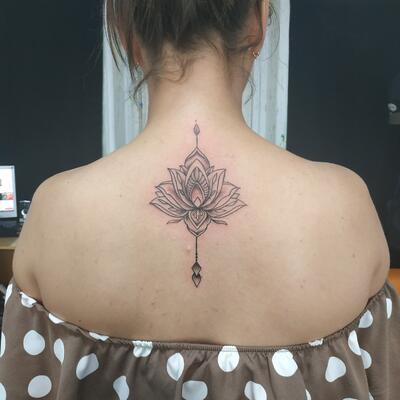Tattoo Mehendi: meaning and sketches for girls and men
What is mehendi?
In fact, mehendi is a national Indian painting technique, such as Khokhloma or gzhel. Only in this case, they draw wet henna on the human body. Traditionally, henna is applied with a thin orange stick or a brush of the smallest size. However, some masters prefer to apply tattoos directly from special tubes.
Henna paints only the upper layers of the skin, so unlike a real tattoo, it does not last long. Depending on the individual characteristics of the skin and the frequency of contact with water, the pattern remains saturated and bright for 3 to 5 weeks.
The indisputable advantage of henna is that, if necessary, it can be washed off with a soap solution and a thick brush. This is a great way of self-expression for those who are in constant search and do not dare to make a real tattoo.
The natural composition of the dye can also be attributed to the plus. In addition, henna has a beneficial effect on the skin. However, it can cause allergies in some people.
One of the disadvantages of such a tattoo is a gradual fading. Spectacular drawings in the first days quickly lose their attractiveness, fade and, when viewed from afar, leave the impression of dirty stains.
Tattoo value
At the dawn of its appearance, mehendi was a kind of amulet, a protective talisman on the body of a woman. It was applied exclusively for practical purposes:
- for protection from evil spirits;
- connections with the gods;
- attracting love, wealth and good luck into your life.
As in many ancient cultures, the basis of mehendi painting is made up of plant and animal ornaments, each of which carries an additional meaning. Among the most popular and having a special energy power:
- mandala. This element represents the universe. Its main purpose is the harmonization of everything that exists. As a talisman, the mandala helps to discover hidden abilities, organize thoughts and emotions, find a point of balance;
- om. The sign is identified with the beginning of Everything. One of the most ancient and mystical symbols. It goes well with other motifs and easily fits into large-scale paintings. Suitable for women who want to know the truth and harmonize the inner world;
- Paisley, Indian cucumber or the tear of Allah. One of the most common symbols of both the ancient and modern world. In Indian interpretations, it is mentioned as a sign of spiritual energy and continuous movement. In the Middle East countries
- Hamsa. Other names of the tattoo: the hand of God or the palm of Fatima. A henna tattoo in the form of a hand with a pinky and thumb tucked up has a protective meaning. The drawing protects the owner from the evil eye and evil spirits. For married ladies, it helps to preserve the family hearth and love. And women in the position, choose it as an additional protection for the unborn baby. Sometimes a half-open palm is depicted with an inscribed eye;
- Peacocks represent immortality, joy and celebration. They help you find inspiration.
Image styles.
Sketches of mehendi tattoos are quite difficult to perform. Each drawing requires special skills and accuracy from the master, as it consists of many details, curved thin lines. But in general, all the variants of drawings belong to only three style directions:
- Arabian. It originated in the Middle East. The tattoo in this style mainly consists of floral motifs, echoes the traditionalpatterns of embroidery and painting.
- Moroccan. The style comes from North Africa. It is distinguished by the predominance of geometric shapes, clear drawing of individual elements and lines.
- Indian. It differs in the scale and tenderness of the drawing. In India, mehendi is necessarily present on the bride's body, so the main part of the patterns are lace paintings made up of iconic and iconic images.
They also distinguish the Asian style, which turned out due to the mixing of Arab-Indian motifs. Drawings in this style are more lush, the lines are thickened. There are many completely colored elements.
Where do they draw mehendi?
Regarding the choice of a place for a mehendi tattoo, a lot of space is provided. This is primarily due to the fragility of the image. The drawing can be applied even to the face, without fear that it will spoil the appearance for life.
Most often, henna tattoos are applied to open places: hands, palms, shoulder blades, shoulders, neck. Pregnant women often decorate their bellies with mehendi.
